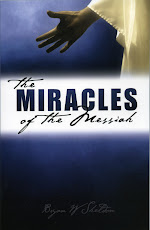The narrative of the rich man and Lazarus was the first stage of the sign of the prophet Jonah – the stage of education. The second stage would be demonstration through the miracle of raising a man from Hades. The third stage would be participation, when the Messiah himself would return from Hades. Jesus, at this time, was not reactive but proactive. He was following a planned timetable. A message came from Bethany to the Messiah that Lazarus, His good friend, was ill (John 11:1 ff). Jesus said, “This sickness is not unto death, but for the glory of God, that the Son of God might be glorified through it”. Nevertheless, He not only waited until Lazarus had died, but planned His journey so that when He arrived Lazarus had been dead three days and three nights. When He arrived at the graveside, He indicated that the miracle He was about to perform was the sign for the nation, “Father, I thank You that You have heard Me. I knew that You always hear Me; but because of the people standing around I said it, so that they may believe that You sent Me.” (John 11:41,42) He also identified it as a sign of deity, “Did I not say to you that if you believe, you will see the glory of God?” (John 11:40) So Jesus commanded, “Lazarus come forth!” And he that had been dead four days rose from the grave. It was commonly believed by the Jews of Jesus’ day that the spirit of the individual did not descend into Hades until after 3 days. Therefore, the raising of Lazarus on the fourth day was a suitable sign for the wicked generation who had asked for a sign from heaven but given a sign from Hades. It was also the pre-curser for the true sign of the prophet Jonah, in which the Messiah would rise from Hades after three days and three nights.
Because of this final attesting sign, many believed. But the nation’s leaders, being fearful that their wealthy, privileged, lifestyle could be lost, still plotted to kill Him and destroy the evidence of the sign: “The chief priests consulted that they might put Lazarus also to death; because that by reason of him many of the Jews went away, and believed on Jesus”. Soon after this sign, and immediately after Caiaphas had led the Sanhedrin to agree to the execution of Jesus, the Messiah sent them ten healed lepers, to leave them without excuse! The Messiah had indicated in the relating of the experiences of the rich man and Lazarus, that if they did not believe Moses and the prophets, they would not believe though one was brought back from Hades. By implication, He again says that they did not believe the Scriptures, repeating the essence of an earlier condemnation, “Do not think that I will accuse you before the Father; the one who accuses you is Moses, in whom you have set your hope. For if you believed Moses, you would believe Me, for he wrote about Me.” (John 5:45,46)
The condemnation of the nation and its leaders was complete. They did not base their lives on the T’nach, they did not live by faith, and against a wealth of evidence the record of which, if written down, would exhaust all available space on earth, (evidence that included having the serpent in subjection, mastery over leprosy, and raising the dead), they rejected God’s Son their Messiah. Jesus believed them culpable: “If I had not done among them the works which no one else did, they would have no sin; but now they have seen and also hated both Me and My Father. But this happened that the word might be fulfilled which is written in their law, They hated Me without a cause.” (John 15:24,25) He described them as a wicked, evil, adulterous generation, who worshipped Mammon. This generation of vipers, rejecting the Word of God, and accepting the word of Satan, spoke with a forked tongue. They followed their father, the Serpent, who is the father of lies. Their web of deceit was never more evident than when events came to their inevitable conclusion; and wicked hands took the holy and innocent Son of God and tried Him for blasphemy and treason.
Next Time: The Death of the Messiah







